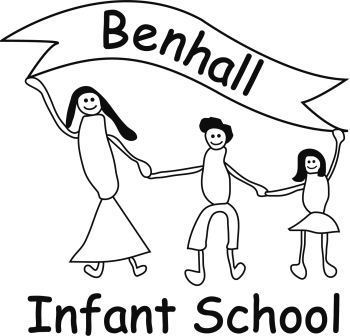Design Technology at Benhall
At Benhall Infant School we believe that every child is can create something using what they know, experience and or imagine. Designers and engineers create something that never was (Theodore Von Karmen)
Key features of effective DT teaching
We understand that children need the opportunity to create in a range of ways. Our classrooms, outdoor learning spaces, food preparation area and our much-loved lego wall gives the children a chance to plan, create, test and evaluate their designs.
The key principles of effective DT teaching includes:
- Inspires good design
- Allows the children to follow the plan, build, test and evaluate formula across the DT curriculum
- maintaining pace of learning
- Continuous teacher assessment through objective led planning
- Invites visitors to share their experiences of DT in the wider community
- early identification of children at risk of falling behind, linked to the provision of effective interventions.
How we teach Design Technology
- At Pre-School, children are encouraged to create and build using a variety of building resources and loose parts both indoors and outdoors.
- In reception DT provision responds to the children’s interests and experiences. Teachers reinforce their knowledge and skills through teacher inputs. Teachers teach the children the skills they need to discuss their designs and the designs of others.
- During forest school the children can work on bringing designs for Dens, bridges and bug hotels to life.
- Regular DT inputs are used to teach the sequence of knowledge and skills within expressive art and design (EYFS) and Design Technology curriculum (NC), building on prior learning.
- DT inputs last between 10 and 20 minutes.
- Provision activities, paired with objective led planning, facilitate opportunities for children to rehearse what they have learned. Teachers use these provision tasks to assess children against the learning objective – adding scaffolding to support or challenge.
- Resources and texts are high quality and support the children’s knowledge and skills within this part of the curriculum.
- Use of the food preparation and workshop areas allow the children to work together, with or without adult support, on a learning challenge.
The child’s progression as a designer:
At Pre-school, I am a mini designer who is discovering the wonder of designing and creating something for myself. I love to test out my designs by knocking the down and can adapt them when I rebuild.
I am able to:
- make imaginative and complex small worlds with blocks and construction kits such as city with different buildings and a park.
- join construction pieces together.
- construct with several types of materials.
In reception, I am an early designer who is confident to develop and realise my creative ideas through provocations and fascinations. I problem solve, reflect on, and refine my own designs.
I am able to:
- construct from an idea.
- represent ideas about what I want to build.
- know how to create my ideas.
- return to my designs and adapt where necessary.
- work with my peers to develop an idea, record, and create using a variety of resources and materials.
- represent my ideas with more detailed designs, including labels.
- safely use a variety of resources to replicate my design.
- talk about my creation in detail and the processes I have used.
- improve my creation as necessary and add to my initial design idea.
- use tools and equipment safely.
In KS1, I am a designer who responds to the design brief to generate and create purposeful and appealing products. I am inspired by what I see, hear and experience to take risks in my designs to create products that show my unique interpretation of the design brief.
I am able to:
- Design purposeful, functional, appealing products for myself and others based on design criteria.
- Generate ideas, develop, and model ideas through talking, drawing templates, mock-ups and where appropriate information and communication technology.
- Select from and use a range of tools and equipment to perform practical tasks (cutting, shaping joining, finishing)
- Select from and use a wide range of materials and components, including construction materials, textiles, and ingredients according to their characteristics.
- Explore and evaluate a range of existing products.
- Evaluate my ideas and products against a design criterion.
- Build structures exploring how they can be made stronger, stiffer, and more stable.
- Explore and use mechanisms in their products (levers, sliders, wheels, axles.
- Use the basic principles of a healthy and varied diet to prepare dishes.
- Understand where food comes from.
- Understand what keeps me healthy/in balance? (PSHE)
